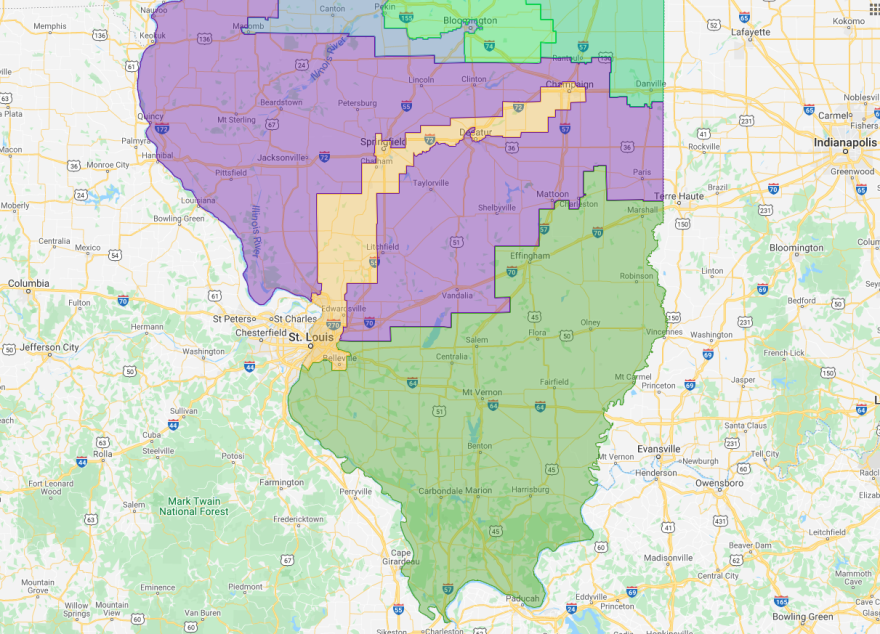Residents in the Metro East have had three congressional representatives for the past decade, and that won’t change for the next one.
New boundaries passed by the Illinois General Assembly last week split the Metro East among the 12th, 13th and 15th districts. But, the number of downstate representatives is about the only thing that’s staying the same.
“The new maps are a fundamental change for the Metro East,” said Ken Moffett, Southern Illinois University Edwardsville’s political science department chair.
In recent years, the Metro East has only had Republican congressmen, but the new boundary lines will likely swing the 13th District back to the Democrats, he said. That district combines more populous and Democratic-leaning parts of the region, like Belleville and East St. Louis, with Springfield, Decatur and Champaign.
While the district is more solidly blue, that doesn’t make it easy to represent, Moffett said.
“The Urbana-Champaign area versus the Metro East, you have fundamentally different economic drivers,” he said. “With Decatur, different still from both and then Springfield with a nontrivial part of the economy driven by the presence of state government.”
Moffett explained this challenge also applies to the 12th and 15th districts, which are also geographically large.
“Just physically in terms of getting to constituents in different parts of the district, much less representing them in some ways simply because the people who live in that district are very different from each other,” he said. “As a representative, one of the things you want to do is you want to appeal to common district interests.”

The new map boundaries also increase pressure on the current Metro East Republican representatives, forcing Mary Miller and Mike Bost into the same district and making Rodney Davis decide if he wants to run in the Democratic-leaning 13th or the Republican-leaning 15th, said Frank Calabrese, a political consultant and map-making expert.
Davis would have to move if he wants to run in the 13th.
“The Democrats in Springfield were a little crafty,” he said. “They don’t want Rodney Davis running statewide, and they don’t really want him running in his former district.”
Having both Democratic and Republican representatives from the Metro East may provide some advantages for the region, like a clear path to lobby for resources from the government, Moffett said.
“No matter which party has a majority of seats in one or both houses of Congress, you’d still have a built-in case for advocacy either way,” he said.
The newly passed maps also solidify Democrats' major advantage, producing 13 solid Democratic seats and one more that leans to the left, Calabrese said.
“Down-ballot performance in these districts is much stronger for Democrats,” he said. “This is an improvement. Republicans had an opportunity under the first proposal, in my estimation, to win six or even up to seven seats.”
Under this map, it’s very likely that Democrats will win 14 out of 17 congressional seats based on previous turnout, Calabrese added.
“Democrats win in these districts from Biden all the way down to attorney general and treasurer, etc.,” he said.
Calabrese explained state Democrats achieved this by carving up DuPage County, which strongly rebuked Donald Trump in the 2020 general election but usually supports down-ballot Republicans.
Next year’s midterm elections will be critical for both political parties because whoever wins the downstate districts will likely hold onto them for the next 10 years, Moffett said.
“The hardest part to staying in office is getting in office,” he said. “The batting average of members of Congress to get reelected is over 90%.”
Eric Schmid covers the Metro East for St. Louis Public Radio as part of the journalism grant program: Report for America, an initiative of The GroundTruth Project.






